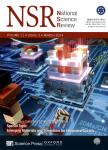Self-assembly of metalla[3]catenanes, Borromean rings and ring-in-ring complexes using a simple π-donor unit
Self-assembly of metallacatenanes, Borromean rings and ring-in-ring complexes using a simple π-donor unit作者机构:State Key Laboratory of Molecular Engineering of Polymers Shanghai Key Laboratory of Molecular Catalysis and Innovative MaterialsDepartment of Chemistry Fudan University
出 版 物:《National Science Review》 (国家科学评论(英文版))
年 卷 期:2020年第7卷第10期
页 面:1548-1556页
核心收录:
学科分类:081704[工学-应用化学] 07[理学] 070304[理学-物理化学(含∶化学物理)] 08[工学] 0817[工学-化学工程与技术] 0703[理学-化学]
基 金:supported by the National Natural Science Foundation of China (21531002, 21720102004 and 21801045) the Shanghai Science and Technology Committee(19DZ2270100)
主 题:coordination-driven self-assembly supramolecular chemistry interlocked structure metallacatenanes molecular Borromean rings ring-in-ring complex
摘 要:Despite extensive research and several stunning breakthroughs in the synthesis of interlocked molecular species, [3]catenanes, Borromean rings and ring-in-ring complexes are exceedingly rare and their targeted synthesis remains a formidable challenge. Herein, a series of Cp*Rh-based homogeneous and heterogeneous interlocked structures have been prepared by coordination-driven self-assembly, not only including metalla[2]catenanes and molecular Borromean rings, but also linear metalla[3]catenanes and ring-in-ring complexes. The interlocked structures are all based on bithiophenyl groups. The bithiophenyl groups effectively enhance the strength of the inter-ring interactions and play a crucial role in the formation of these interlocked structures. By taking advantage of the strong interaction between π-donor(D) andπ-acceptor(A) groups, the electron-deficient methylviologen cation was introduced into a cationic metallarectangle based on bithiophenyl groups. Taking inspiration from these results, a cationic metallarectangle based on A units was threaded into a metallarectangle based on D units, leading to a heterogeneous D–A ring-in-ring structure.



